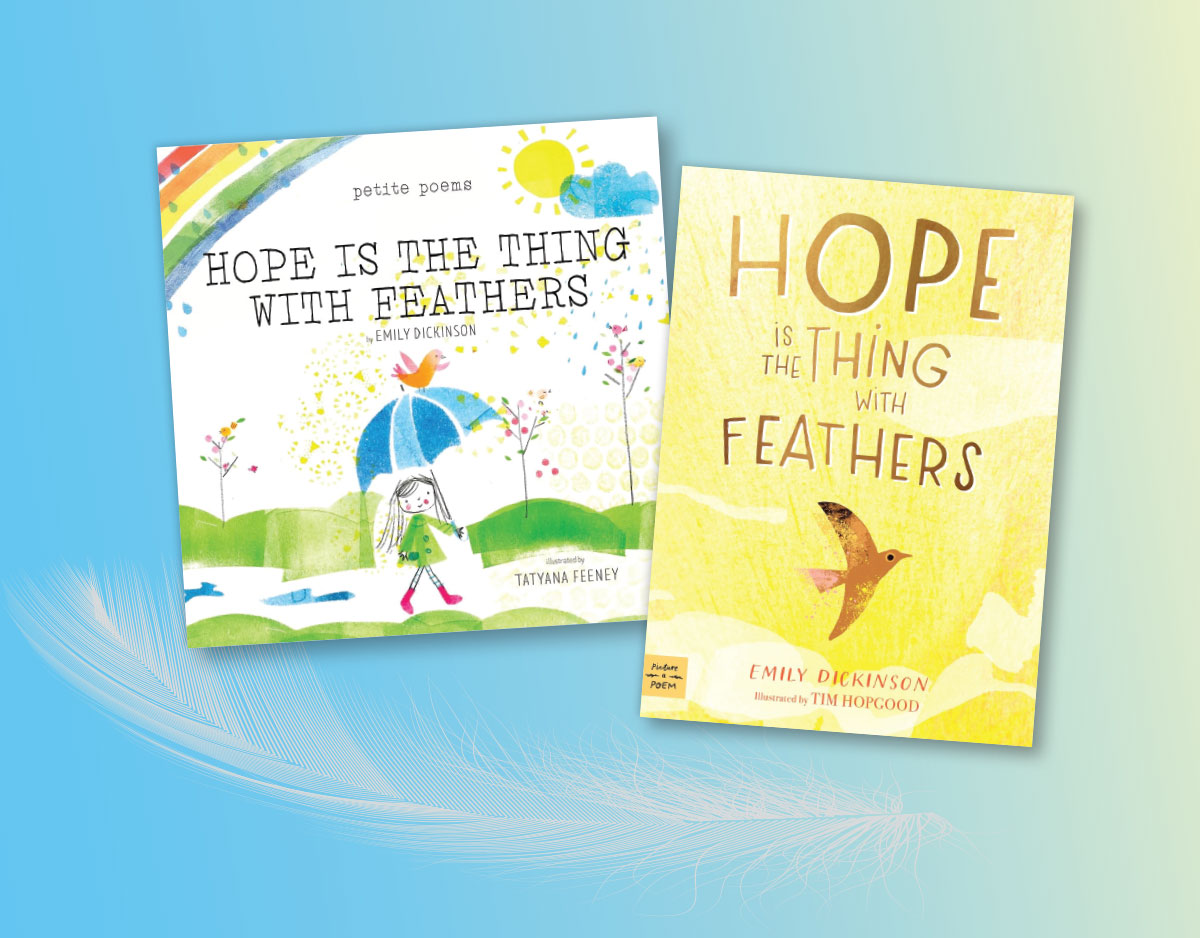2 Picture Books Based on Emily Dickinson's 'Hope Is the Thing with Feathers' | Poetry Spotlight
In these two picture books, a couple of different illustrators have shared their creative vision for Emily Dickinson’s famous poem, “Hope Is the Thing with Feathers.”

One hallmark of a classic is that it can be interpreted in many ways. Here, two different illustrators have shared their creative vision for Emily Dickinson’s famous poem, “Hope Is the Thing with Feathers.”
DICKINSON, Emily. Hope Is the Thing with Feathers. illus. by Tatyana Feeney. 24p. (Petite Poems). Cameron Kids. Mar. 2024. Tr $15.99. ISBN 9781951836948.
PreS-Gr 2–In this new addition to the “Petite Poems” collection, Emily Dickinson’s classic is brought to life in vibrant hues. In the beginning, a variety of tiny birds dance across the page, as a young pencil-outlined child collects a dropped feather. The lines of the poem alternate pages, as the child, friends, neighbors, and birds weather rain and wind, but still come out smiling, evoking the spirit of hope explored in the poem. While the vocabulary and language of the poem might be challenging for young readers on their own, Feeney’s illustrations are accessible and easy to follow. The full text of the poem as well as a brief bio appear at the end of the book, along with prompts for readers to think about how hope might manifest in their own lives. VERDICT An endearing addition to collections where poetry books are popular, or a suitable choice for National Poetry Month.–Kaitlin Malixi
DICKINSON, Emily. Hope Is the Thing with Feathers. illus. by Tim Hopgood. 32p. (Picture-a-Poem). Paw Prints. Mar. 2024. Tr $18.99. ISBN 9781223188164.
Gr 1-5–Unlike humor poets Shel Silverstein and Jack Prelutsky, who have wide appeal to the school-age set, romantic poetry can be tricky for young readers who prefer a tidy narrative. Dickinson’s “Hope Is the Thing with Feathers” offers a just-right sojourn for children into the metaphoric language of poetry. Its subject has a modern-day relevance that will inspire engaging discourse, both in classrooms and at home. Hopgood’s interpretations of the classic poem provide consistent visual mooring for Dickinson’s text, depicting the resilience of hope in the form of a songbird whose song survives the many obstacles life puts in the way. In Dickinson’s parting stanza, “Yet - never - in Extremity, It asked a crumb - of me,” provides a fruitful opportunity for meaningful exchange between little ones and their grown-ups. VERDICT A fine foray into canonical poetry for young learners.–Sarah Simpson
The job outlook in 2030: Librarians will be in demand
The job outlook in 2030: Librarians will be in demand
ALREADY A SUBSCRIBER? LOG IN
We are currently offering this content for free. Sign up now to activate your personal profile, where you can save articles for future viewing





Add Comment :-
Be the first reader to comment.
Comment Policy:
Comment should not be empty !!!